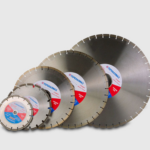Infrared heaters over the past years have undergone a huge number of changes, as a result of which they began to be used in various fields. It is worth noting that one group of people claims that infrared heating is the perfect choice, and the other considers such heaters to be far from the best choice in our time. In this article, we will consider the principle of operation of this type of heaters, as well as their classification and application.
Infrared heaters – principle of operation
Although there are a lot of infrared heaters, all of them work according to a single principle. In addition, they have approximately the same structural features. Each heater of this type is a warm panel or lamp. But all other “competitors” of infrared heaters are heat exchangers that are used in different environments. This applies to radiators, heat -tents, batteries, etc.
Convector, oil radiator or radiator for the water heating system is heated bodies in which air receives heat from preheated fluid. For this reason, an increase in the surface area of the radiator used improves heat transfer. The air temperature in the room directly depends on the surface area of a particular radiator, as well as the temperature of the liquid, which contains.
But the infrared heater is a heated body with a deflector creating infrared rays that almost never contact with air. The heating of the room depends on the deflector itself, as well as the temperature of the heater.
Classification of infrared heaters
Infrared heaters that are available today are grouped in the following parameters:
• energy used to heat the emitter (electric, gas or water);
• Heating temperature (short, medium, as well as long-wave).
The field of use of infrared heating
In some cases, only infrared devices can provide heating. For example, this is relevant for rooms whose ceilings are quite high. For this reason, infrared heating is often used in large workshops, as well as various warehouses.
Another scope is heated open arbors, cafes, etc. P.





